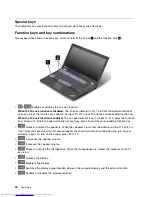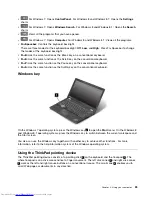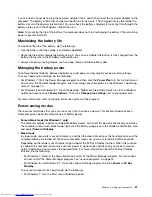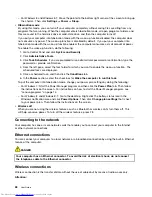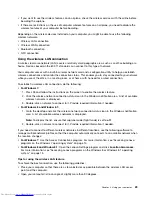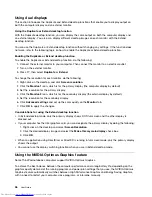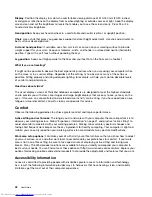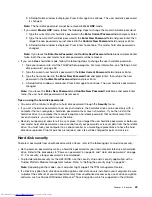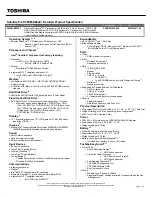
6. Click the
Monitor
tab. Check the monitor information to make sure that the monitor type is correct. If it
is, click
OK
to close the window; otherwise proceed with the following steps.
7. If more than two monitor types are displayed, select
Generic PnP Monitor
or
Generic Non-PnP
Monitor
.
8. Click
Properties
. If you are prompted for an administrator password or confirmation, type the password
or provide confirmation.
9. Click the
Driver
tab.
10. Click
Update Driver
.
11. Click
Browse my computer for driver software
, and then click
Let me pick from a list of device
drivers on my computer
.
12. Clear the
Show compatible hardware
check box.
13. Select the correct manufacturer and model for the external monitor. If you cannot find your monitor on
the list, stop the installation of this driver and use the driver shipped with your monitor.
14. After updating the driver, click
Close
.
Changing the color settings
• For Windows 7:
1. Right-click anywhere on the desktop, and click
Screen resolution
.
2. Click
Advanced Settings
, select the
Monitor
tab, then set
Colors
.
3. Click
OK
.
• For Windows 8 and Windows 8.1:
1. Right-click anywhere on the desktop, and click
Screen resolution
.
2. Click
Advanced Settings
, and then select the
Color Management
tab.
3. Click
Color Management
, and then select the
Advanced
tab.
4. Change the color settings as you desired, and then click
Close
.
Considerations for connecting an external monitor
• When installing an operating system, you must install the display driver for your monitor that is provided
with the computer, and the monitor INF file that is provided with the external monitor.
• If you set a resolution higher than the resolution you are using on the computer monitor, and use an
external monitor that does not support that resolution, take advantage of the virtual screen function,
which enables you to display only a part of the high-resolution screen image your computer produces.
You can see other parts of the image by moving the screen with the TrackPoint pointing device or another
pointing device.
• If the external monitor you are using is outdated, the resolution and the refresh rate might be limited.
Using a DVI monitor
If your computer has one of the following optional docking stations, you can use a Digital Visual Interface
(DVI) monitor through the DVI connector of that unit:
• ThinkPad Pro Dock
• ThinkPad Ultra Dock
Notes:
• The screen mode that can be used depends on the specifications of the DVI monitor.
• Before you connect a DVI monitor, make sure that the computer is connected to the expansion unit and
works properly.
34
User Guide
Summary of Contents for ThinkPad T440p
Page 1: ...User Guide ThinkPad T440p ...
Page 6: ...iv User Guide ...
Page 56: ...40 User Guide ...
Page 72: ...56 User Guide ...
Page 82: ...66 User Guide ...
Page 110: ...94 User Guide ...
Page 120: ...104 User Guide ...
Page 138: ...122 User Guide ...
Page 144: ...128 User Guide ...
Page 164: ...148 User Guide ...
Page 170: ...154 User Guide ...
Page 174: ...158 User Guide ...
Page 176: ...Ukraine RoHS 160 User Guide ...
Page 181: ......
Page 182: ......
Page 183: ......



